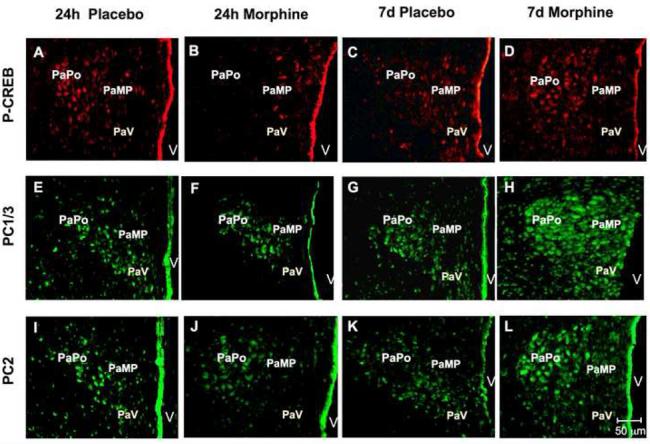Fig. 3.


Changes in P-CREB, PC1/3 and PC2 levels in the paraventricular (PVN) nucleus of the hypothalamus of rats treated with morphine for 24 h or seven days as determined by immunofluorescence. Placebo or morphine pellets were implanted subcutaneously in the neck of rats for 24 h or seven days. Rats were then sacrificed, perfused with paraformaldehyde and their brains excised and fixed. Coronal sections of frozen slices (8-μM thick) of the paraventricular nucleus of the hypothalamus were cut, mounted, and subjected to immunofluorescence for P-CREB (A-D), PC1/3 (E-H) and PC2 (I-L). Figures are representatives of 4 rats treated/group. Quantification of P-CREB (M), PC1/3 (N) and PC2 (O) immunoreactivity in the PVN expressed as the Integrated Optical Density/area is also shown. Data is expressed as mean +/- SEM. n=4 rats per group. Magnification 200X. Bar = 50 μM, *p<0.05, **p<0.005. ***p<0.0005. P, placebo; M, morphine. PaV: paraventricular nucleus, ventral. PaMP: medial paraventricular nucleus, PaPo: paraventricular nucleus, posterior, V: third ventricle.
